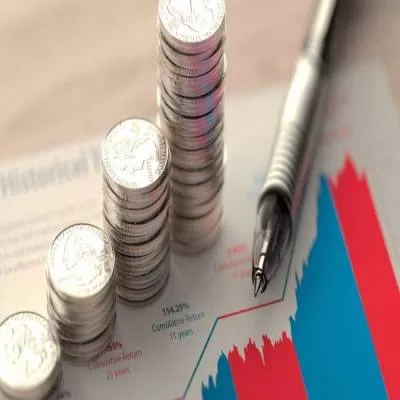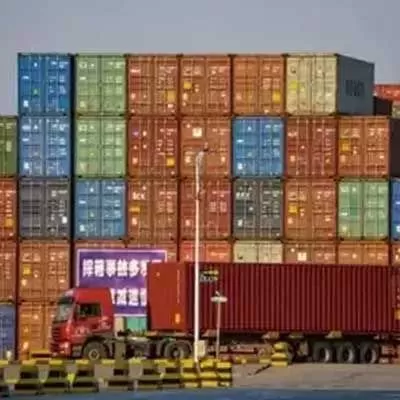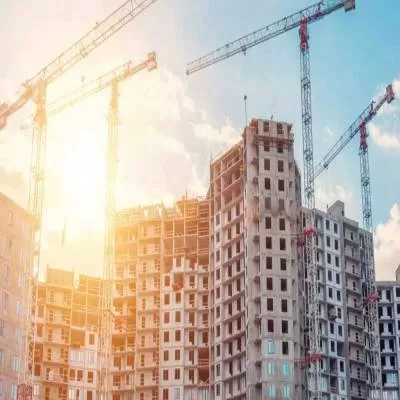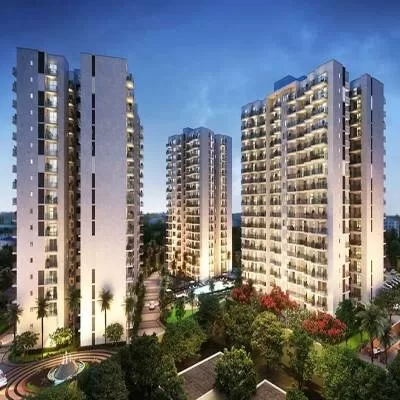- Home
- Real Estate
- Flowing in the Right Direction
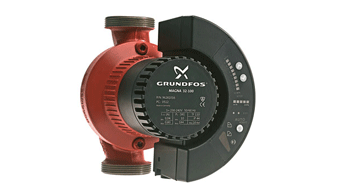
Flowing in the Right Direction
Burgeoning demand for new residential real estate and plans to boost the countrys sanitation network bode well for the plumbing installations market. The promise: To boost Indias low per capita usage of plumbing products vis-a-vis the developed world.
State of the market
Market sentiment is fairly positive across the piping systems, fittings and pumping system segments. "Poly Vinyl Chloride (PVC) and Chlorinated Poly Vinyl Chloride (CPVC) piping systems now account for 70 per cent of the market, having captured most of the market for Galvanised Iron (GI) pipes," says P Ranga Rao, Sales Manager, Sudhakar Group. "Demand for GI pipes has drastically come down owing to their corrosiveness, scaling and pitting formation. We see continuous growth of PVC and CPVC pipes and fittings and expect these to replace GI pipes for all but industrial applications. In particular, imported CPVC technology is useful for both hot and cold water supply applications."
"The piping business in India is worth upwards of Rs 15,000 crore and is growing at 20 per cent," shares Gajanan S Dikondawar, General Manager, Innovation & Technology, Supreme. "Conventional piping products have either been replaced or are getting replaced with advanced plastic piping products and systems because the latter are better and cheaper. For instance, Supremes SWR drainage system in uPVC has successfully replaced the conventional cast iron (CI) system, at a reduced cost. Our aqua gold uPVC high pressure plumbing system, Indo green PP-R hot and cold water system, Eco-drain structured-wall hi-tech pipes and Nu-drain underground drainage system and Skyrise hi-tech low noise SWR drainage system are all path-breaking systems that have been well received."
"Chrome plated fittings (faucets) and allied materials are growing at about 12 per cent annually," says Atul Sanghvi, Executive Director, CERA Sanitaryware Ltd. In the fittings segment, "the premium market is showing positive signs and is expected to grow at a CAGR of about 14 per cent during 2013-18," says Ravi Nindwani, Managing Director, Delta Faucet Company India Pvt Ltd.
"In recent times, pump system growth rates have been slow because of weak performance of the manufacturing, agriculture and services sectors," notes Vikas Agarwal, Business Head, Building & Construction Sector, Kirloskar Brothers Ltd. "Residential real estate has shown growth but as a thumb rule, equal amount of floor space for residential real estate requires half the pumping capacity as compared to commercial real estate. Business sentiments remain weak despite recent reform initiatives. In the short term, weak industrial performance is likely to persist on account of lacklustre external demand and the absence of reliable power supply." Nevertheless, Agarwal is optimistic about future prospects. "Pumps lie at the heart of all engineering systems," he adds. "So we expect the industry to show a steady growth in the mid to long term, driven by investments in water, irrigation, power, oil and gas and industry segments. Currently valued at Rs 7,500 crore, we expect the Indian pump industry to grow at 8 per cent year-on-year to reach Rs 14,000 crore by 2017-18."
Commercial vs domestic
Key differences exist between commercial and domestic demand for plumbing installations. Commercial demand is limited in its range vis-a-vis domestic demand. Bath tubs, showers, kitchen sinks, etc, are only required in residential properties. Also, hot water distribution systems are usually not needed in office and retail buildings although they are needed in hotels and hospitals. Drainage system pipes are usually the same for both types of buildings. Given these variances, what are some salient trends in demand from both segments for piping system and fixtures?
"CPVC piping systems are preferred for commercial projects because they are easy to install, compatible with both cold and hot water applications, and boast of a strong market presence," responds Sunil Kumar Duggal, Director, Northern Sanitation (P) Ltd. "Brands like Flowguard, Prince and Supreme are actively marketing these. Residential projects are still making greater use of GI pipes for water distribution. Plastic pipes of brands like Finolex, Prince and Supreme are popular choices for drainage piping systems."
"Commercial demand for fixtures is usually limited to water closets, urinals, lavatory basins and ablution faucets," says Sudhakaran Nair, President, Indian Plumbing Association and Chairman, World Plumbing Council. "Water conservation technologies such as low-flow fixtures, rainwater harvesting and re-use are simpler to implement in commercial buildings."
According to Sanghvi, "Sensor faucets and urinals are preferred for commercial projects while design is the key in the residential sector. Also, green is in. Increasing awareness about water conservation is spurring demand for fixtures that send less water down the drain, without compromising on the functional aspects and comforts of the user."
"The residential sector is more focused on showering technologies and options in finishes," says Nindwani, "Whereas buyers for commercial properties demand low-maintenance durable fittings that make use of green water-saving technology and offer hygiene-enhancing functionality such as hands-free fixtures using the latest proximity technology. Anti-theft features are also in demand, such as fixed faucets with parts that cannot be removed, handle-free faucets and fixed aerators on the spout."
Theres a reason for greater demand for low-maintenance products from the commercial segment. "As developers sell most residential units as outright sales to customers and their liability ends after handing over the premises to the society of residents, these properties tend to feature fewer maintenance-friendly products and more low-cost products," explains Chintan Daiya, Partner & Director, DPlumbing Consultants. "On the other hand, developers usually lease commercial premises and assume the responsibility for their maintenance or outsource it to a project management company. Hence, commercial properties feature more materials guaranteeing a faster payback period and future flexibility."
Impact of high-rise construction
High-rise construction, which is charting an upward trend in cities, is boosting demand for pumps and piping systems. "The growing number of residential towers is spurring demand for high-capacity pumps," observes Duggal. "Whereas low-rise constructions used to make do with pumps of 50-60 m head, housing projects of 30 storeys and more need pumps of minimum capacity of 100 m head."
"Nowadays, urban areas are witnessing higher growth in demand for plumbing systems for residential projects," says Nair. "The increasing number of high-rise residence constructions is also driving demand for experienced plumbing contractors. High-end high-rises with amenities such as centralised hot water system especially call for advanced plumbing engineering. Developers of high-end properties are willing to spend more on imported plumbing products. Unfortunately, this willingness is limited only to front of the wall products such as sanitary fixtures, faucets and showers. They still try to cut corners on the heart of plumbing systems, the back of the wall pipe work, equipment and other associated accessories." To this, Daiya adds, "Plumbing has traditionally been neglected and continues to suffer, in that theres an absence of appreciable exigency to install better products."
Scope for innovation
Innovations aim to create more energy-efficient, water-efficient, sustainable and space-saving solutions, for which demand is steadily growing. "Following the successful run of our twin-flush WCs, which were trendsetters in water-saving toilets, we have launched water-saving faucets and showers," Sanghvi informs. New premium housing developments and the increasing number of high-end consumers updating their existing fit-outs are driving the premium fittings segment, which is seeing considerable innovation. Nindwani believes such consumers are increasingly open to adopt proven advanced technologies that enhance their showering experience. "For example, our Touch2O capacitance sensing technology enabled faucets have received a positive response," he elaborates. "These stand apart from the usual motion and/or light sensing technology driven faucets. Capacitance sensors detect a conductive object by measuring changes in electrical properties. Also, our H2O kinetic shower technology, which creates the feeling of an enhanced water flow without using more water, is finding new takers."
In real-estate parlance, space is money. So Agarwal says any pump that saves space and energy is welcome. As pumping is a 24 + 7 requirement, product reliability also plays a big role. With this in mind, Kirloskar has launched the Lowest Life-cycle Cost (LLC) series pumps for high-end commercial buildings, hotels, hospitals and green buildings. Meant for varied usage, these are most popular for HVAC purposes. "An HVAC system of 10 75-kw pumps can save up to Rs 40 million in 10 years," he points out. "On an average, LLC pumps have a payback period of 12-16 months measured in terms of water and energy savings. We have also launched multi-stage multi-outlet fire pumps for high-rise and super high-rise buildings. These systems save up to two car parking spaces."
For his part, Gangaprasad G, Head-Commercial Building Services, Grundfos Pumps India, tells us, "We are the first pump company in India to switch from IE1 to energy-efficient IE2 motors as standard from August this year." In fact, Grundfos has declared India as its second home market. To this end, it is also innovating made in India for India products.
Recent launches include a factory-assembled, plug-and-douse fire protection system featuring a broad selection of pumps, motors, diesel engines, controls and high-quality accessories. Grundfos has also launched the Magna3 circulator pump, which is designed for circulating liquids in heating systems, domestic hot-water systems and air-conditioning and cooling systems. "Magna3 is an energy-optimised pump, capable of reducing power consumption up to 85 per cent through its innovative AUTOADAPT function that automatically analyses the heating system, finds the optimum setting and then continuously adjusts its operation to changes in demand," explains Gangaprasad.
Better availability
Better quality and a greater range of plumbing products now being available in the country is a positive sign. "Most products available globally are either accessible in India or are in the process of being launched," says Daiya. Also, the number of plumbing-oriented developers has been gradually increasing and hence so is the awareness about products like variable frequency drive-based hydro-pneumatic pumps and water-efficient fixtures.
"Better plumbing products now available from domestic manufacturers include piping materials for water distribution systems such as uPVC, CPVC and PPR," says Nair. "These are non- corrosive and have largely replaced steel tubes, the only product available until a few years ago. Dual-flush toilets, low-flow flushing systems for urinals and metered (mechanical or electronic) faucets for basins can be easily sourced now." So whats still missing? "End-users, architects and developers lack knowledge about products, their availability and usage," answers Daiya. "Theres a pressing need for a code to ensure that unscrupulous vendors cannot dump overseas material rejects here. Also, products and their allied fittings need to be made available in smaller markets. Deeper market penetration is required and not just project level penetration."
Duggal also believes that more competitive pricing will boost the uptake of products such as the water hammer arrestor, which is of use in high-rise constructions; back flow preventer, which differs from non return valves; and small water treatment and recycling units suitable for residences.
Water requirements as per the National Building Code
- Residential units: 135 litre per capita per day (90 for domestic, 45 for flushing)
- Commercial: 45 litre per capita per day (20 for domestic, 25 for flushing
Source: Chintan Daiya, Partner & Director, D’Plumbing Consultants
Sanitation levels (2013)
- India: 36
- Sri Lanka: 92
- France: 100
Source: The World Bank
Average occupancy criterion for working out the need for plumbing alliances and appurtenances
- Domestic units: 5 people per apartment
- Commercial units: Usually 1 WC is provided for 25 males or 1 WC per 15 females*
*This must be re-explored from a gender and industry-specific standpoint. For example, a call centre works 24 hours, hence a three-shift office should be considered.
Source: Chintan Daiya, Partner & Director, DPlumbing Consultants
To share your views on the Pipes, Fittings and Pumps in India, write in at feedback@ASAPPmedia.com
-CHARU BAHRI
Notwithstanding slow expansion of commercial property, theres movement in the plumbing installations market with green and low maintenance products all the rage. Burgeoning demand for new residential real estate and plans to boost the countrys sanitation network bode well for the plumbing installations market. The promise: To boost Indias low per capita usage of plumbing products vis-a-vis the developed world. State of the market Market sentiment is fairly positive across the piping systems, fittings and pumping system segments. "Poly Vinyl Chloride (PVC) and Chlorinated Poly Vinyl Chloride (CPVC) piping systems now account for 70 per cent of the market, having captured most of the market for Galvanised Iron (GI) pipes," says P Ranga Rao, Sales Manager, Sudhakar Group. "Demand for GI pipes has drastically come down owing to their corrosiveness, scaling and pitting formation. We see continuous growth of PVC and CPVC pipes and fittings and expect these to replace GI pipes for all but industrial applications. In particular, imported CPVC technology is useful for both hot and cold water supply applications." "The piping business in India is worth upwards of Rs 15,000 crore and is growing at 20 per cent," shares Gajanan S Dikondawar, General Manager, Innovation & Technology, Supreme. "Conventional piping products have either been replaced or are getting replaced with advanced plastic piping products and systems because the latter are better and cheaper. For instance, Supremes SWR drainage system in uPVC has successfully replaced the conventional cast iron (CI) system, at a reduced cost. Our aqua gold uPVC high pressure plumbing system, Indo green PP-R hot and cold water system, Eco-drain structured-wall hi-tech pipes and Nu-drain underground drainage system and Skyrise hi-tech low noise SWR drainage system are all path-breaking systems that have been well received." "Chrome plated fittings (faucets) and allied materials are growing at about 12 per cent annually," says Atul Sanghvi, Executive Director, CERA Sanitaryware Ltd. In the fittings segment, "the premium market is showing positive signs and is expected to grow at a CAGR of about 14 per cent during 2013-18," says Ravi Nindwani, Managing Director, Delta Faucet Company India Pvt Ltd. "In recent times, pump system growth rates have been slow because of weak performance of the manufacturing, agriculture and services sectors," notes Vikas Agarwal, Business Head, Building & Construction Sector, Kirloskar Brothers Ltd. "Residential real estate has shown growth but as a thumb rule, equal amount of floor space for residential real estate requires half the pumping capacity as compared to commercial real estate. Business sentiments remain weak despite recent reform initiatives. In the short term, weak industrial performance is likely to persist on account of lacklustre external demand and the absence of reliable power supply." Nevertheless, Agarwal is optimistic about future prospects. "Pumps lie at the heart of all engineering systems," he adds. "So we expect the industry to show a steady growth in the mid to long term, driven by investments in water, irrigation, power, oil and gas and industry segments. Currently valued at Rs 7,500 crore, we expect the Indian pump industry to grow at 8 per cent year-on-year to reach Rs 14,000 crore by 2017-18." Commercial vs domestic Key differences exist between commercial and domestic demand for plumbing installations. Commercial demand is limited in its range vis-a-vis domestic demand. Bath tubs, showers, kitchen sinks, etc, are only required in residential properties. Also, hot water distribution systems are usually not needed in office and retail buildings although they are needed in hotels and hospitals. Drainage system pipes are usually the same for both types of buildings. Given these variances, what are some salient trends in demand from both segments for piping system and fixtures? "CPVC piping systems are preferred for commercial projects because they are easy to install, compatible with both cold and hot water applications, and boast of a strong market presence," responds Sunil Kumar Duggal, Director, Northern Sanitation (P) Ltd. "Brands like Flowguard, Prince and Supreme are actively marketing these. Residential projects are still making greater use of GI pipes for water distribution. Plastic pipes of brands like Finolex, Prince and Supreme are popular choices for drainage piping systems." "Commercial demand for fixtures is usually limited to water closets, urinals, lavatory basins and ablution faucets," says Sudhakaran Nair, President, Indian Plumbing Association and Chairman, World Plumbing Council. "Water conservation technologies such as low-flow fixtures, rainwater harvesting and re-use are simpler to implement in commercial buildings." According to Sanghvi, "Sensor faucets and urinals are preferred for commercial projects while design is the key in the residential sector. Also, green is in. Increasing awareness about water conservation is spurring demand for fixtures that send less water down the drain, without compromising on the functional aspects and comforts of the user." "The residential sector is more focused on showering technologies and options in finishes," says Nindwani, "Whereas buyers for commercial properties demand low-maintenance durable fittings that make use of green water-saving technology and offer hygiene-enhancing functionality such as hands-free fixtures using the latest proximity technology. Anti-theft features are also in demand, such as fixed faucets with parts that cannot be removed, handle-free faucets and fixed aerators on the spout." Theres a reason for greater demand for low-maintenance products from the commercial segment. "As developers sell most residential units as outright sales to customers and their liability ends after handing over the premises to the society of residents, these properties tend to feature fewer maintenance-friendly products and more low-cost products," explains Chintan Daiya, Partner & Director, DPlumbing Consultants. "On the other hand, developers usually lease commercial premises and assume the responsibility for their maintenance or outsource it to a project management company. Hence, commercial properties feature more materials guaranteeing a faster payback period and future flexibility." Impact of high-rise construction High-rise construction, which is charting an upward trend in cities, is boosting demand for pumps and piping systems. "The growing number of residential towers is spurring demand for high-capacity pumps," observes Duggal. "Whereas low-rise constructions used to make do with pumps of 50-60 m head, housing projects of 30 storeys and more need pumps of minimum capacity of 100 m head." "Nowadays, urban areas are witnessing higher growth in demand for plumbing systems for residential projects," says Nair. "The increasing number of high-rise residence constructions is also driving demand for experienced plumbing contractors. High-end high-rises with amenities such as centralised hot water system especially call for advanced plumbing engineering. Developers of high-end properties are willing to spend more on imported plumbing products. Unfortunately, this willingness is limited only to front of the wall products such as sanitary fixtures, faucets and showers. They still try to cut corners on the heart of plumbing systems, the back of the wall pipe work, equipment and other associated accessories." To this, Daiya adds, "Plumbing has traditionally been neglected and continues to suffer, in that theres an absence of appreciable exigency to install better products." Scope for innovation Innovations aim to create more energy-efficient, water-efficient, sustainable and space-saving solutions, for which demand is steadily growing. "Following the successful run of our twin-flush WCs, which were trendsetters in water-saving toilets, we have launched water-saving faucets and showers," Sanghvi informs. New premium housing developments and the increasing number of high-end consumers updating their existing fit-outs are driving the premium fittings segment, which is seeing considerable innovation. Nindwani believes such consumers are increasingly open to adopt proven advanced technologies that enhance their showering experience. "For example, our Touch2O capacitance sensing technology enabled faucets have received a positive response," he elaborates. "These stand apart from the usual motion and/or light sensing technology driven faucets. Capacitance sensors detect a conductive object by measuring changes in electrical properties. Also, our H2O kinetic shower technology, which creates the feeling of an enhanced water flow without using more water, is finding new takers." In real-estate parlance, space is money. So Agarwal says any pump that saves space and energy is welcome. As pumping is a 24 + 7 requirement, product reliability also plays a big role. With this in mind, Kirloskar has launched the Lowest Life-cycle Cost (LLC) series pumps for high-end commercial buildings, hotels, hospitals and green buildings. Meant for varied usage, these are most popular for HVAC purposes. "An HVAC system of 10 75-kw pumps can save up to Rs 40 million in 10 years," he points out. "On an average, LLC pumps have a payback period of 12-16 months measured in terms of water and energy savings. We have also launched multi-stage multi-outlet fire pumps for high-rise and super high-rise buildings. These systems save up to two car parking spaces." For his part, Gangaprasad G, Head-Commercial Building Services, Grundfos Pumps India, tells us, "We are the first pump company in India to switch from IE1 to energy-efficient IE2 motors as standard from August this year." In fact, Grundfos has declared India as its second home market. To this end, it is also innovating made in India for India products. Recent launches include a factory-assembled, plug-and-douse fire protection system featuring a broad selection of pumps, motors, diesel engines, controls and high-quality accessories. Grundfos has also launched the Magna3 circulator pump, which is designed for circulating liquids in heating systems, domestic hot-water systems and air-conditioning and cooling systems. "Magna3 is an energy-optimised pump, capable of reducing power consumption up to 85 per cent through its innovative AUTOADAPT function that automatically analyses the heating system, finds the optimum setting and then continuously adjusts its operation to changes in demand," explains Gangaprasad. Better availability Better quality and a greater range of plumbing products now being available in the country is a positive sign. "Most products available globally are either accessible in India or are in the process of being launched," says Daiya. Also, the number of plumbing-oriented developers has been gradually increasing and hence so is the awareness about products like variable frequency drive-based hydro-pneumatic pumps and water-efficient fixtures. "Better plumbing products now available from domestic manufacturers include piping materials for water distribution systems such as uPVC, CPVC and PPR," says Nair. "These are non- corrosive and have largely replaced steel tubes, the only product available until a few years ago. Dual-flush toilets, low-flow flushing systems for urinals and metered (mechanical or electronic) faucets for basins can be easily sourced now." So whats still missing? "End-users, architects and developers lack knowledge about products, their availability and usage," answers Daiya. "Theres a pressing need for a code to ensure that unscrupulous vendors cannot dump overseas material rejects here. Also, products and their allied fittings need to be made available in smaller markets. Deeper market penetration is required and not just project level penetration." Duggal also believes that more competitive pricing will boost the uptake of products such as the water hammer arrestor, which is of use in high-rise constructions; back flow preventer, which differs from non return valves; and small water treatment and recycling units suitable for residences. Water requirements as per the National Building Code Residential units: 135 litre per capita per day (90 for domestic, 45 for flushing) Commercial: 45 litre per capita per day (20 for domestic, 25 for flushing Source: Chintan Daiya, Partner & Director, D’Plumbing Consultants Sanitation levels (2013) India: 36 Sri Lanka: 92 France: 100 Source: The World Bank Average occupancy criterion for working out the need for plumbing alliances and appurtenances Domestic units: 5 people per apartment Commercial units: Usually 1 WC is provided for 25 males or 1 WC per 15 females* *This must be re-explored from a gender and industry-specific standpoint. For example, a call centre works 24 hours, hence a three-shift office should be considered. Source: Chintan Daiya, Partner & Director, DPlumbing Consultants To share your views on the Pipes, Fittings and Pumps in India, write in at feedback@ASAPPmedia.com -CHARU BAHRI


